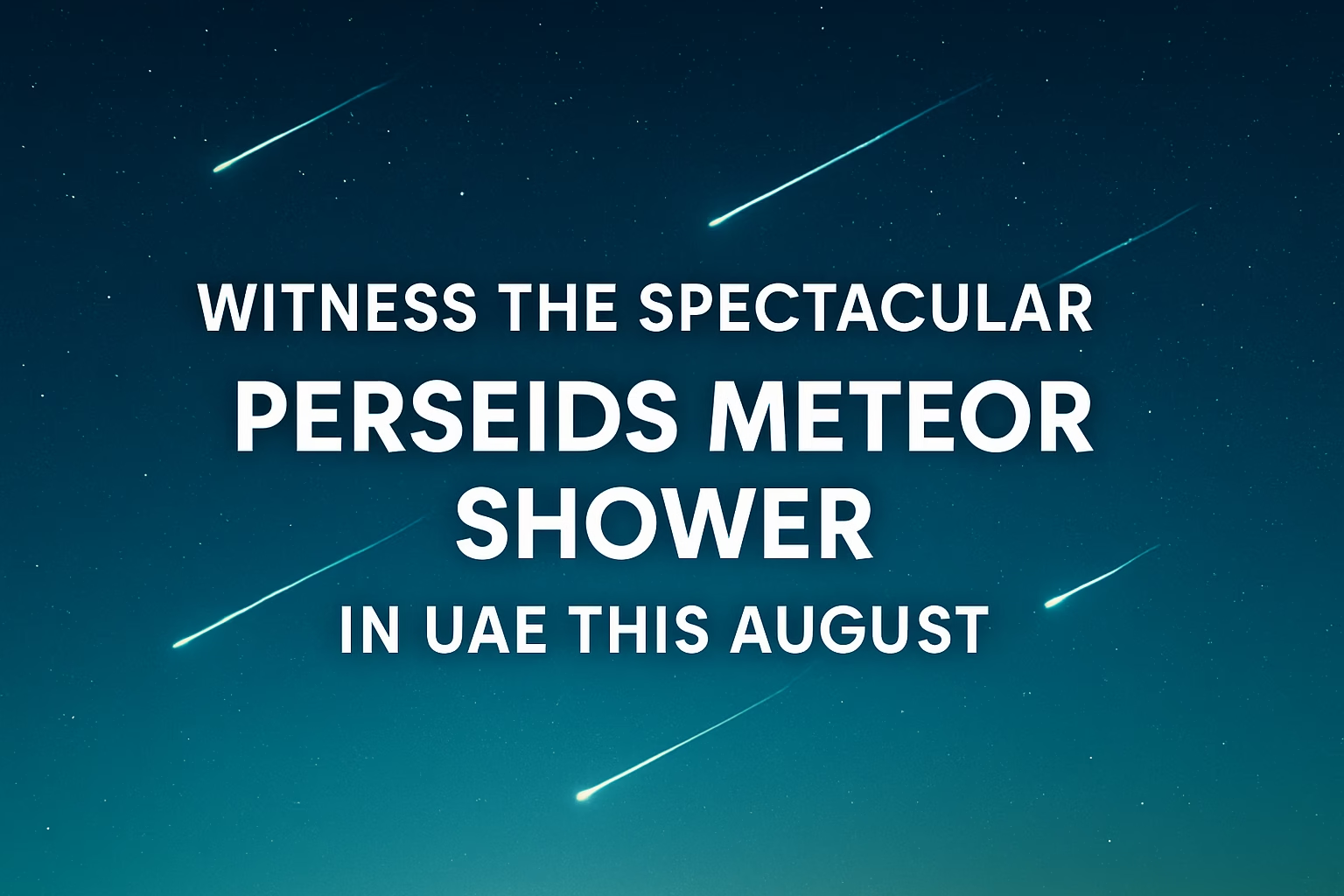The residents of the UAE are in for a celestial spectacle this August because the annual Perseid meteor shower is all set to reach its peak. Moreover, this show is one of the most popular astronomic events of the year, as it is popular for its brilliant fireballs and vivid streaks of light.
As per the Dubai Astronomy Group (DAG), the Perseids will peak from August 12 to 13 August with optimal viewing from midnight until dawn. Still, the bright moon might disturb the view for some of the fainter meteors. However, the fireballs will remain easily visible because they will be brighter and sometimes accompanied by a sound.
What is the Perseids Meteor Shower?
Comet Swift-Tuttle causes the Perseids, and it is a 26-km wide comet that orbits the sun every 133 years. So, dust and debris will enter our atmosphere at a speed of 59km/s as Earth passes through the debris trails left behind by the comet. So, it is going to create bright flashes as they burn up.
The shower is named after the Perseus constellation, where the meteors appear to originate. Interestingly, Swift–Tuttle is nearly double the size of the asteroid. Thus, it led to the extinction of the dinosaurs. However, astronomers confirm it poses no threat for thousands of years.
Where to Watch in the UAE?
As a stargazer, you should head to the dark locations far from the city lights for the best experience. The UAE’s highest peak, Jebel Jais, is one of the most recommended spots to watch this iconic event. Moreover, the DAG is set to host the special viewing event there on 12 from 11 PM to 3 AM with the following perks:
- Guided stargazing
- Telescope sessions
- Storytelling and astronomical commentary
There is no binocular or telescope needed for watching this event. Only, you need your eyes and, most importantly, patience. However, it would be best to let your vision adjust for about 20 to 30 minutes the darkness for the clearest view.
Tips to Photograph the Perseids
- It would be best to use a mirrorless camera or a DSLR with manual settings
- Set aperture to f/2.8 or lower, ISO 1600+, and exposure between 15–30 seconds
- Keep your camera on a sturdy tripod and use a remote shutter
- Focus manually on a bright star or planet for sharp results
- Bring spare batteries and a lens heater to avoid condensation
The Perseids meteor shower will be an unforgettable night under the stars. Thus, you should not miss this opportunity to connect with the cosmos from the pristine highland in the UAE.
Read more:




I like this weblog so much, saved to favorites. “To hold a pen is to be at war.” by Francois Marie Arouet Voltaire.
Hello, i believe that i saw you visited my weblog thus i came to “go back the choose”.I’m trying to find things to improve my web site!I guess its adequate to use some of your ideas!!